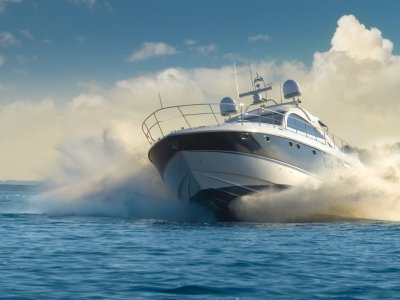What Is A Sea Trial And Why Is It Important?

A sea trial is an inspection of a boat to check its seaworthiness. It is a great way to get a feel for how a boat handles on the water and gives you an opportunity to see if there are any issues with a boat before you buy it.
Buying a boat is a big decision and an exciting experience. Make sure you get a thorough evaluation so you have no surprises once in your possession.
Many boat buyers hire a marine surveyor or industry expert to accompany them during the sea trial before buying a boat.
Sea Trial Checklist
- Create a "real-life" environment by operating the boat under the same conditions you would on a typical boating trip. Consider how you will use the boat eg. fishing, skiing, cruising, racing etc.
- The engine should be 'cold' when you start a sea trial. Many times an engine that has been warmed to operating temperature will act different than it did when cold.
- Check varying engine speeds, driving in different wave and wind conditions and adding extra weight on board. Check for rattles and vibrations. At no-wake speeds, center the wheel and note how well the boat keeps its line.
- Test the boat's maneuverability including:
Slalom or left and right turns
Swerve to avoid turns
Full circle turns
Backing in and docking. - Play the role of both driver and passenger. Check visibility and comfort.
- Use the navigation and communications electronics including the VHF radio and the autopilot, anchor using the windlass, run the generator if there is one, understand digital systems and monitor the batteries. If you want to see how to launch the dinghy down off the flybridge, ask for it to be done.
On-Land Checks
- Ask for maintenance records. If the boat is a popular model, do some online research on performance and possible issues.
- Check that all safety equipment is on board and in good working order.
- Use all your senses. If there is a strong smell of fuel, it could mean a leaky fuel line. If you notice a musky mildew smell, check for leaks or water in storage compartments and other hard-to-see areas of the boat. Any trace of gas, burning rubber or smoke is cause for immediate concern.
- Check for scratches, chips, cracks or corrosion. Although a few minor blemishes are common in used boats, multiple cracks or extensive corrosion in one area could be cause for concern.
- Do all windows, doors and compartments open without difficulty? Are grab rails and seats firmly mounted? This is also a good time to check for loose wiring, including cut or frayed lines.
- Inspect the upholstery — including seats, cushions, curtains, blinds, clears and bimini etc.
No boat is perfect. Not all issues will be deal-breakers, but they can help you negotiate the price. Address any issues with as much reason and as little emotion as possible. Obtain an estimate of the cost of repair or replacement. Understand that if your offer comes in low, the seller may not be motivated to make many changes.


